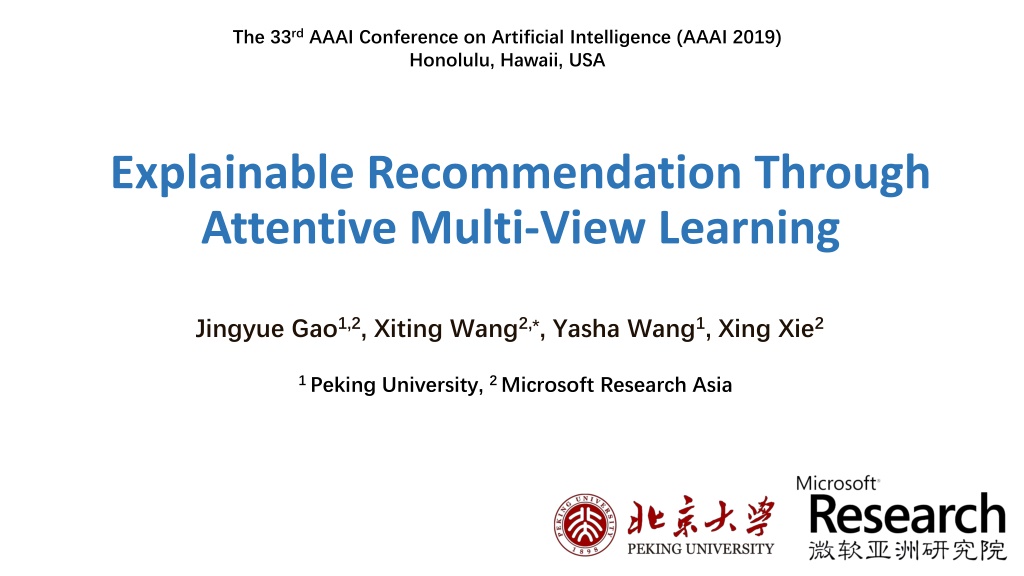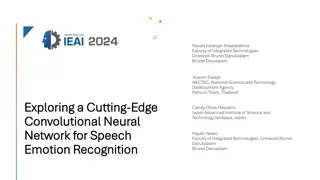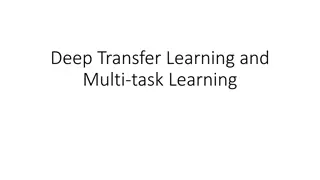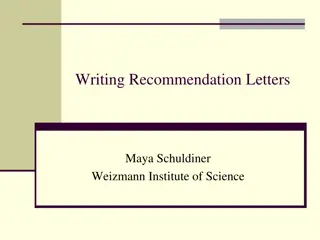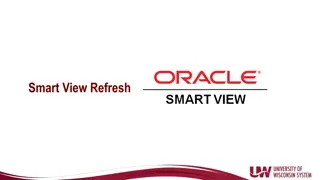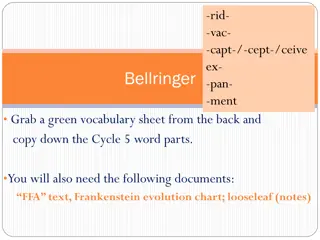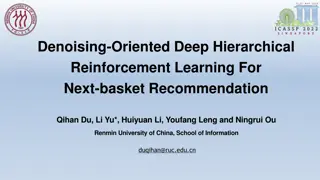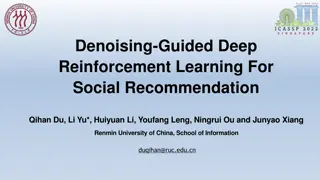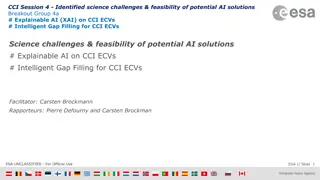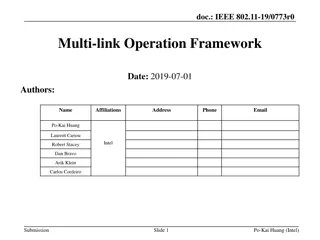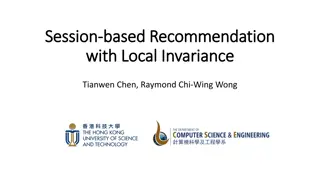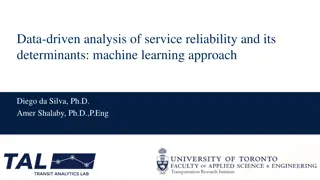Explainable Recommendation Using Attentive Multi-View Learning
The research presented at the 33rd AAAI Conference on Artificial Intelligence focuses on developing an explainable deep model for recommendation systems. It addresses challenges in extracting explicit features from noisy data and proposes a Deep Explicit Attentive Multi-View Learning Model. This model incorporates hierarchical propagation of user-feature interests and emphasizes the importance of multi-level structures for improved accuracy and explainability in recommendation systems.
- Artificial Intelligence
- Recommendation Systems
- Explainable AI
- Multi-View Learning
- Hierarchical Propagation
Download Presentation

Please find below an Image/Link to download the presentation.
The content on the website is provided AS IS for your information and personal use only. It may not be sold, licensed, or shared on other websites without obtaining consent from the author. Download presentation by click this link. If you encounter any issues during the download, it is possible that the publisher has removed the file from their server.
E N D
Presentation Transcript
The 33rd AAAI Conference on Artificial Intelligence (AAAI 2019) Honolulu, Hawaii, USA Explainable Recommendation Through Attentive Multi-View Learning Jingyue Gao1,2, Xiting Wang2,*, Yasha Wang1, Xing Xie2 1 Peking University, 2 Microsoft Research Asia
Motivation: An Explainable Deep Model Build a network based an explainable deep hierarchy to improve accuracy and explainability simultaneously IsA Relationship IsA Microsoft Concept Graph Feature hierarchy
Challenges Model multi-level explicit features from noisy and sparse data Shrimp Seafood Meat Users may be interested in Seafood even if they mainly mention Shrimp and Meat in reviews Generate explanations from the multi-level structure Features could be semantically overlapping Simultaneously putting Shrimp and Seafood in explanations will degrade user experience.
Hierarchical Propagation Propagate user-feature interest over the hierarchical structure Feature embedding is trained beforehand using GloVe to capture both semantic and hierarchical information
Hierarchical Propagation Propagate user-feature interest over the hierarchical structure
Attentive Multi-View Learning Prediction loss Co-regularization loss Loss in each view Regularization Joint learning
Attentive Multi-View Learning Features at different hierarchical levels are regarded as different views on user interest and item quality In each single view, we extend EFM to EFM++ by adding rating biases Loss in each view
Attentive Multi-View Learning A common paradigm of Multi-View Learning Enforce agreement on predictions from multiple views Co-regularization loss
Attentive Multi-View Learning Predictions from all views are attentively combined for final prediction Prediction loss
Personalized Explanation Generation Select ? features from the feature hierarchy for explanation Whether a feature ?? is important in recommendation Whether user ? is interested in ?? How well item ? performs on ?? The weight of the view that ?? belongs to Define a Utility Function for each feature
Personalized Explanation Generation Objective Maximize the sum of utilities of ? selected features Constraint Features cannot be simultaneously selected with their ancestors in the hierarchy Constrained Tree Node Selection Problem
Personalized Explanation Generation Dynamic Programming ?(?,?): maximum sum of utilities if selecting ? nodes in the subtree rooted at ??; ?: total number of children of ?? ?(?,?,?): maximum sum of utilities if selecting nodes from the first ? children of ??; ????: id of ?-th child of ??; Complexity
Evaluation Study on model accuracy Parameter sensitivity analysis Study on explainability
Datasets Amazon Tuples: (user, item, rating, review, time) Amazon Yelp
Study on Model Accuracy G1: only use the observed rating matrix G2: knowledge-based G3: leverage textual reviews EFM: state-of-the-art method for mining feature-level explanations DeepCoNN, NARRE: deep-learning based DEAML-V: a variant of our DEAML without attention mechanism
Parameter Sensitivity Analysis Number of latent factors Weight ? of co-regularization Weight ?of errors of each review
Study on Explainability Quantitative analysis Scores (1-5) annotated by users Qualitative analysis Visualization of user interest over the feature hierarchy a 30-year-old male Yelp user a 26-year-old female Yelp user
Thanks! 19
